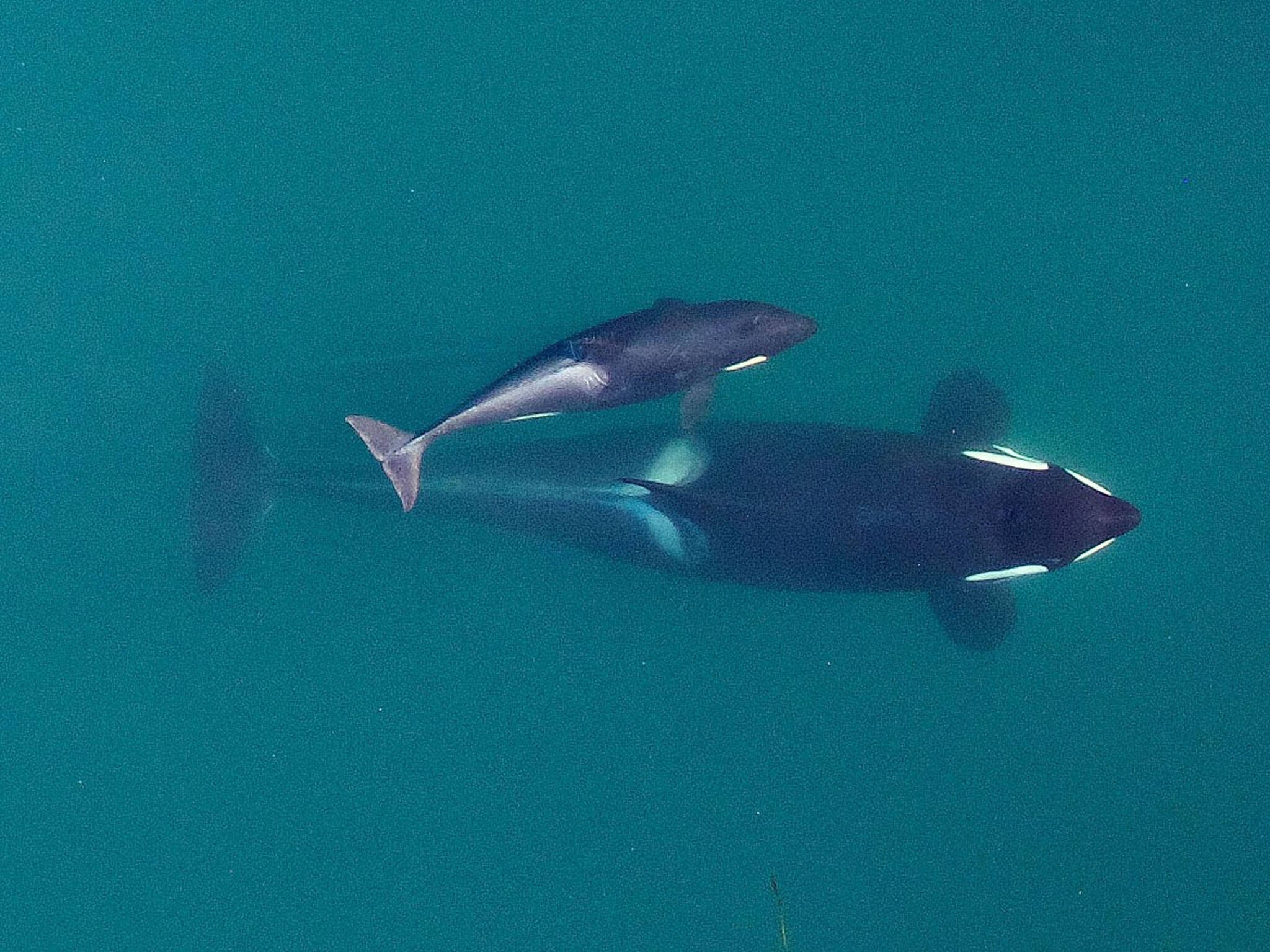SEATTLE — People have taken many steps in recent decades to help the Pacific Northwest’s endangered killer whales, which have long suffered from starvation, pollution and the legacy of having many of their number captured for display in marine parks.
They’ve breached dikes and removed dams to create wetland habitat for Chinook salmon, the orcas’ most important food. They’ve limited commercial fishing to try to ensure prey for the whales. They’ve made boats slow down and keep farther away from the animals to reduce their stress and to quiet the waters so they can better hunt.
So far, those efforts have had limited success, and research published Monday in the journal Nature Ecology and Evolution suggests why: The whales are so inbred that they are dying younger and their population is not recovering. Female killer whales take about 20 years to reach peak fertility, and the females may not be living long enough to ensure the growth of their population.
While that news sounds grim for the revered orcas — known as the “southern resident” killer whales — it also underscores the urgency of conservation efforts, said Kim Parsons, a geneticist with the National Oceanic and Atmospheric Administration’s NOAA Fisheries who co-authored the study. The population is not necessarily doomed, she said.
“It’s not often inbreeding itself that will result in a shortened lifespan or kill an individual,” Parsons said. “It’s really that inbreeding makes these individuals more vulnerable to disease or environmental factors. We can support the population by supporting the environment and giving them the best chance possible.”
The struggles of the charismatic population of orcas that frequent the waters between Washington state and the Canadian province of British Columbia have been well documented — including in 2018, when one grieving mother carried her stillborn calf for 17 days in an apparent effort to mourn or revive it.
The southern resident population comprises three clans of whales known as the J, K and L pods. They are socially distinct and even communicate differently from other orca populations, including the nearby northern residents, which are listed as threatened and which primarily range from Vancouver Island up to Southeast Alaska.
While the southern residents’ range overlaps with other populations of killer whales, they haven’t regularly interbred in 30 generations, the researchers said.
In the 1960s and 1970s, dozens of Pacific Northwest whales were caught for display in marine theme parks. The whale-capture industry argued that there were many orcas in the sea, and that some could be sustainably caught.
At least 13 orcas died in the roundups, and 45 were delivered to theme parks around the world — reducing the southern resident population by about 40%. The brutality of the captures began to draw public outcry and a lawsuit to stop them in Washington state.
Today only 73 southern residents remain, according to the Center for Whale Research on Washington state’s San Juan Island. That’s just two more than in 1971. Of those captured, only one — 56-year-old Lolita, at the Miami Seaquarium — survives. The Seaquarium announced last year it would no longer feature Lolita in shows.
Prior studies have suggested that inbreeding was a problem, including a 2018 study that found just two males had fathered more than half the calves born to the southern residents since 1990.
For the new research, NOAA geneticist Marty Kardos, Parsons and other colleagues sequenced the genomes of 100 living and dead southern residents, including 90% of those alive now. Those whales had lower levels of genetic diversity and higher levels of inbreeding than other populations of killer whales in the North Pacific, they found.
The capture of the whales decades ago, as well as the geographic or social isolation of the animals, likely explains the inbreeding, the researchers said.
Meanwhile, conservation efforts have helped other North Pacific orca populations thrive. The northern resident killer whales have increased from about 122 animals in 1974 to more than 300 by 2018. Like the southern residents, they only eat fish, primarily salmon — unlike many other killer whales, which eat mammals such as seals.
The Alaska resident killer whale population is estimated to have doubled from 1984 to 2010. According to the researchers, the southern residents would likely be on a similar trajectory if not for their elevated levels of inbreeding.
Inbreeding has also afflicted other populations of isolated or endangered animals, such as mountain lions in California, gorillas in Africa and bottle nose dolphins off western Australia. In some cases, scientists may be able to improve the gene pool in one population by capturing and introducing animals from another.
That’s not the case for orcas, which are massive and free-swimming. Further, the southern residents already have opportunities to interbreed — they just haven’t done so, Parsons said.
“We really have to leave it to those whales to mate with whom they choose and support the population in other ways,” Parsons said.

